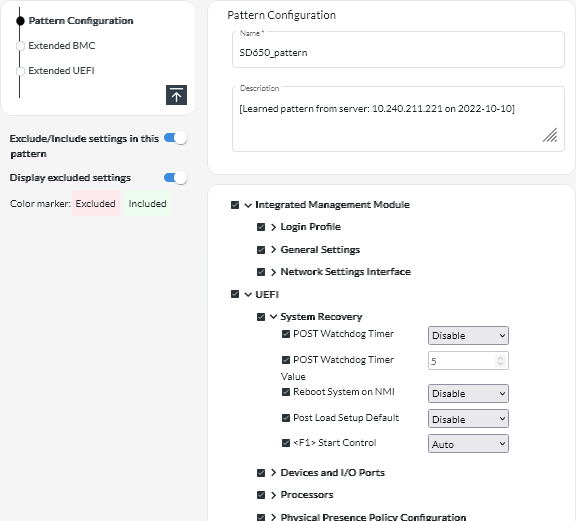Maintaining server-configuration compliance
The settings on a server can become out of compliance with the server settings were changed without using configuration patterns, if an issue occurred when applying a configuration pattern (for example, if the pattern was created from an earlier firmware level than what is on the server), or when applying a firmware update that changes the server configuration (for example, settings might be added or deleted, setting behaviors might change, new choices might be added, or value ranges might change).
About this task
You can determine the compliance status of each server from the Compliance Status column on the Server Configuration: Assign and Deploy page. If a server is non-compliant, hover the cursor over the status to determine the reason.
Procedure
To resolve configuration-compliance issues, perform one of the following steps.
- Learn a new configuration pattern based on the current firmware level (see Learning a server-configuration pattern from an existing server). Then, assign and apply that pattern to the server (see Assigning and deploying a server-configuration pattern).
- Modify the applicable configuration pattern to correct non-compliant settings by clicking the row for the pattern to display the pattern details, making necessary changes, and then clicking Save.
By default, all learned settings are included in the pattern. You can exclude settings from the pattern by selecting Exclude/Include settings in the pattern and then clearing the settings that you do not want in the pattern. Settings that are cleared (marked for exclusion) are highlighted in yellow. When you click Save, only settings that are included in the pattern are listed. If you excluded settings, you could include them again by clicking Exclude/Include settings in the pattern, clicking Display excluded settings., and then selecting the settings you want to include. Settings that are selected (marked for inclusion) are highlighted in green.
NoteThe compliance check is based on only included settings. Excluded settings are not checked.When you save the modified pattern, XClarity Orchestrator runs a compliance check on the servers that are assigned that pattern to determine whether the server configuration matches the pattern. You can then deploy the changed pattern to the servers that are not compliant (see Assigning and deploying a server-configuration pattern).

- Create a modified copy of the configuration pattern by clicking the row for the pattern to display the pattern details, making necessary changes, and then clicking Save As. Then, assign and apply that pattern to the non-compliant server (see Assigning and deploying a server-configuration pattern).